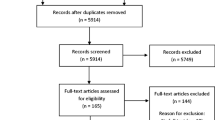Abstract
Traditional, hands-on dissection of an animal is common practice in many classrooms to aid in the study of anatomy and biology. More specifically, virtual dissection environments have been developed making it possible to study the inner workings of animals without cutting them up. In this paper, we present a novel virtual reality dissection simulator, where a user can dissect an animal (i.e. frog) and its organs using a 3D force feedback haptic device. The simulator uses force feedback as part of a multimodal cue to provide guidance and performance feedback to the user. This paper highlights methodologies which are used for addressing some of the key challenges involved in designing and developing simulators, such as: modelling and mechanics of deformation, collision detection between multiple deformable bodies, and haptic feedback.






































Similar content being viewed by others
References
Basdogan C, Srinivasan M (2001) Haptic rendering in virtual environments. In: Stanney K (ed) Virtual environments handbook, Erlbaum, Mahwah, NJ, pp 117–134
Basdogan C, De S, Kim J, Manivannan M, Kim H, Srinivasan MA (2004) Haptics in minimally invasive surgical simulation and training. IEEE Comput Graph Appl 24(2):56–64
Brown J, Sorkin S, Bruyns C, Latombe JC, Montgomery K, Stephanides M (2001) Real-time simulation of deformable objects: tools and application. Computer animation 2001, Seoul, Korea, November 7–8
Burden RL, Faires JD (2000) Numerical analysis. Brooks-Cole
Cover S, Norberto FE, Obrien JF, Rowe R, Gadau T, Palm E (1993) Interactively deformable models for surgery simulation. In: Proceedings of ICRA, pp 68–75
Crossan A, Brewster S, Reid S et al (2001) A horse ovary palpation simulator for veterinary training. In: Haptic human-computer interaction, pp 157–164
Doo D, Sabin M (1978) Behaviour of recursive division surfaces near extraordinary points. Comput Aided Des 10:356–360
France L, Lenoir J, Angelidis A, Meseure P, Cani MP, Faure F, Chaillou C (2005) A layered model of a virtual human intestine for surgery simulation. Med Image Anal 9:123–132
Georgii J, Westermann R (2006) A multigrid framework for real-time simulation of deformable bodies. Comput Graph 30(3):409–416
Gibson S (1997) A survey of deformable modeling in computer graphics. Technical report no. TR-97-19, Mitsubishi Electric Research Laboratory, Cambridge MA
Laugier C, Mendoza C, Sundaraj K (2003) Towards a realistic medical simulator using virtual environments and haptic interaction. Robotics Research, volume 6 of Springer Tracts in Advanced Robotics (STAR)
Lawlor OS, Kale LV (2002) A voxel-based parallel collision detection algorithm. In: Proceedings of the 16th international conference on Supercomputing, 22–26 June, pp 285–293
Lin M, Gottschalk S (1999) Collision detection between geometric models: a survey. In: Proceedings of IMA conference on mathematics of surfaces, pp 37–56
Lundin K, Cooper M, Ynnerman A (2007) Enabling design and interactive selection of haptic modes. Virtual Real J 11(1):1–13
Mendoza C, Sundaraj K, Laugier C (2003) Faithfull haptic feedback in medical simulators. Robotics Research, volume 5 of Springer Tracts in Advanced Robotics (STAR)
Montgomery K, Bruyns C, Wildermuth S (2001) A virtual environment for simulated rat dissection: a case study of visualization for astronaut training. Vis 2001, San Diego, California
Palmerius KL, Cooper M, Ynnerman A (2008) Haptic rendering of dynamic volumetric data, visualization and computer graphics. IEEE Transactions 14(2):263–276
Pauly M, Pai D, Guibas L (2004) Quasi-rigid objects in contact, Eurographics/ACM SIGGRAPH symposium on computer animation
Payandeh S, Azouz N (2001) Finite elements, mass-spring-damper systems and haptic rendering. In: Proceedings of IEEE international symposium on computational intelligence in robotics and automation, pp 224–230
Picinbono G, Lombardo J (1999) Extrapolation: a solution to force feedback. In: International scientific workshop on virtual reality and prototyping, Laval, France, pp 117–125
Segerlind L (1976) Applied finite element analysis. Wiley, New Jersey
Sundaraj K (2004) Real-time dynamic simulation and 3D interaction of biological tissue: application to medical simulators. PhD. Thesis, Institut National Polytechnique de Grenoble
Suzuki S, Suzuki N, Hattori A, Uchiyama A, Kobayashi S (2004) Sphere-filled organ model for virtual surgery system. IEEE Transactions Med Imaging 23(6):714
Teschner M, Kimmerle S, Heidelberger B (2005) Collision detection for deformable objects. Comput Graphics Forum 24(1):61–81
Tong C, Song A, Juan W (2007) A mass-spring model for haptic display of flexible object global deformation. In: Proceedings of ICMA 2007
Van Den Bergen G (1997) Efficient collision detection of complex deformable models using AABB trees. J Graphics Tools 2(4):1–14
Zhang H, Payandeh S, Dill J (2004) On cutting and dissection of virtual deformable objects. In: Proceedings of IEEE international conference on robotics and automation, pp 3908–3913
Zhang J, Payandeh S, Dill J (2005) A study of level-of-detail in haptic rendering. ACM Trans Appl Percept 2(1):15–34
Zhennan Y, Lixu G, Huang P (2007) Soft tissue deformation simulation in virtual surgery using nonlinear finite element method. In: Proceedings of the 29th annual international conference of the IEEE EMBS
Zhou M, Claffee K, Lee K, McMurray G (2006a) Cutting, ‘by pressing and slicing’, applied to the robotic cut of bio-materials, Part I: modeling of stress distribution. In: Proceedings ICRA06, pp 2896–2901
Zhou M, Claffee K, Lee K, McMurray G (2006b) Cutting, ‘by pressing and slicing’, applied to the robotic cut of bio-materials, Part II: force during slicing and pressing cuts. In: Proceedings of ICRA06, pp 2256–2261
Author information
Authors and Affiliations
Corresponding author
Appendix A: Questionnaire from user study
Appendix A: Questionnaire from user study
1.1 Opinion questionnaire
Now that you have completed the experiment, we would like to ask you a few questions about what you experienced. In the questions below asking for a selection on a range of 1 to 5, circle one number where 1 is poor and 5 is excellent.

Rights and permissions
About this article
Cite this article
Vafai, N.M., Payandeh, S. Toward the development of interactive virtual dissection with haptic feedback. Virtual Reality 14, 85–103 (2010). https://doi.org/10.1007/s10055-009-0132-3
Received:
Accepted:
Published:
Issue Date:
DOI: https://doi.org/10.1007/s10055-009-0132-3




